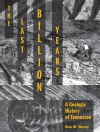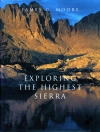Extraterrestrial Remote Sensing and Climate Change
Thought provoking treatise that aims to answer questions about Earth’s environment based on research done through remote sensing techniques
In Extraterrestrial Remote Sensing and Climate Change, the author addresses longstanding questions about a possible correlation between fluctuations in solar activity and changes in the Earth’s atmosphere and geosphere that have been observed during periods of extraterrestrial changes such as solar eclipses or solar storms. The author goes on to suggest possible mechanisms for anomalies seen in climate change and other environmental effects through a deep examination of interdisciplinary research.
Core topics covered in the work include:
* Data from ground-based detectors and from the Solar and Heliospheric Observatory (SOHO) satellite, which monitor solar activity
* Key variables associated with sunspot eruption, such as electron flux, proton flux, X-ray flux, and planetary indices
* Observable changes in other planets and their moons, as well as in cosmic radiation from beyond the sun
* Extraterrestrial effects on the Earth’s magnetic field and on seismic activity
With its fresh and multidisciplinary approach, Extraterrestrial Remote Sensing and Climate Change is a thought-provoking treatise for students, researchers, and professionals in the fields of environmental science and climate science.
Tabela de Conteúdo
Preface viii
Acknowledgments ix
1 Extraterrestrial Remote Sensing 1
1.1 Introduction 1
2 Principles of Remote Sensing of Sun-Earth Climate 7
2.1 Introduction 7
2.2 SEVAN Data Interpretation for Solar Influence on Climate Change 9
2.3 Changes Within the Sun in 24 Hours and Its Effect on the Environment of the Earth 12
3 Extraterrestrial Remote Sensing Satellites 17
3.1 Introduction 17
3.2 Workstation Requirements 20
3.3 Sun Heliophysical Observatory (SOHO) Interdisciplinary Science Matrix 21
4 Extraterrestrial Satellite Data Collection and Interpretation 28
4.1 Introduction 28
4.2 The Sunspot Activities 34
4.2.1 Solar Flares Behave Like a Twinkling Butterfly 34
5 Terrestrial Satellite Data Correlation with Extraterrestrial Satellite Data 40
5.1 Morphological Units 42
5.2 Terrestrial Correlation 42
5.3 Geomorphology of Terrestrial Analogue 43
5.4 Landform Features of Terrestrial Analogue 44
5.5 Terrain Roughness Index 44
5.6 Mineralogy of Soil Samples 45
5.7 Exploration Missions 46
6 Solar Eclipse and Climate Change 51
6.1 Introduction 51
6.2 The Data Interpretation 51
6.2.1 Tropospheric NO2 Data 52
6.2.2 Aerosol Data 52
6.2.3 Cloud Data 53
6.2.4 Cosmic Ray Data 53
6.2.5 Electron Flux Data 53
7 Snowfall Influenced by the Changes in the Sun 65
7.1 Introduction 65
7.2 Sun-Earth Cosmic Connection in Glacier and Snowfall 66
7.3 Star-Sun Influence on the Earth’s Atmosphere 68
8 Rainfall Prediction by Cosmic Ray Variability 74
8.1 Introduction 74
8.2 Cosmic Rays and Rainfall 74
8.3 JNU, New Delhi, India, Showing Sudden Rise in Cosmic Particle Count Rate on 10 April 2012 77
8.4 Influence of Solar Activity on Weather Prediction 79
9 Earthquake Prediction by Using Solar and Cosmic Ray Data 83
9.1 Introduction 83
9.2 National Capital Region, India: Tectonics and Extraterrestrial Influence 83
9.3 Gujarat, Kutch, India Region: Tectonics and Extraterrestrial Influence 86
10 Global Warming and Changes in the Sun 92
10.1 Introduction 92
10.2 Impact of Solar Changes on Global Warming 93
10.3 Arguments in Contradiction to the View of Global Warming 102
11 Extraterrestrial Remote Sensing of Planets 105
11.1 Introduction 105
11.2 Radio Emissions of Jupiter Were Inferred to Establish Its Magnetic Field 106
11.3 Planets Influenced by Pleiades 109
11.4 Influence of the Solar Storms Affects Saturn 111
12 Remote Sensing of the Moon of the Earth 114
12.1 Landing Site Selection Based on Morphology and Mineralogy of the Basin 121
12.2 Morphological Study of the Crater 126
12.2.1 Fractures on Crater Floor 126
12.2.2 Central Peak 126
12.2.3 Terraced Walls 126
12.2.4 Rampart Crater 127
12.2.5 Formation of Catena Krafft 127
12.2.6 Rays Around the Crater 129
12.3 Morphological Variations in Light of Mineralogy of the Study Area 129
References 131
Further Reading 132
13 Remote Sensing of Mars 134
Further Reading 141
14 Future of Extraterrestrial Remote Sensing 146
14.1 Introduction 146
14.2 High-resolution Extraterrestrial Investigation 147
14.3 Ionosphere Monitoring Satellite 149
Further Reading 156
Index 159
Sobre o autor
Saumitra Mukherjee, Professor, Geology and Remote Sensing, School of Environmental Sciences, Jawaharlal Nehru University, New Delhi, India.












